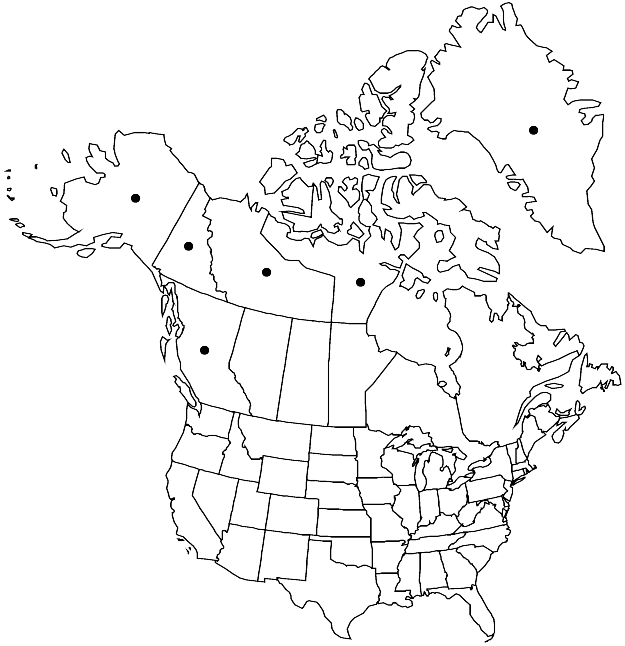Draba corymbosa
Syst. Nat. 2: 343. 1821.
Perennials; (cespitose); caudex branched (with persistent leaves or leaf remains, branches sometimes terminating in sterile rosettes); scapose. Stems unbranched, (0.05–)0.2–0.8(–1.5) dm, pubescent throughout, trichomes simple and 2-rayed, 0.4–1 mm, with 3–5-rayed ones, 0.05–0.4 mm, (sometimes trichomes mostly simple). Basal leaves rosulate; petiolate; petiole base and margin ciliate, (trichomes often course, simple, 0.4–1.3 mm); blade oblanceolate to obovate, 0.6–1.8 cm × 1.5–5 mm, margins entire, surfaces pubescent, abaxially with stalked, 2–6-rayed trichomes, 0.2–0.6 mm, adaxially with primarily simple and stalked, 2-rayed trichomes, to 1.1 mm, with 3–5-rayed ones, 0.2–0.4 mm. Cauline leaves 0. Racemes 2–9(–12)-flowered, ebracteate, (corymbose), slightly elongated in fruit; rachis not flexuous, pubescent as stem. Fruiting pedicels divaricate-ascending, straight or slightly curved upward, 4–11(–16) mm, pubescent, trichomes simple and 2–4-rayed. Flowers: sepals (grayish green), broadly ovate, 2.2–3 mm, pubescent, (trichomes simple, to 1 mm, sometimes with stalked, smaller, 2–4-rayed ones); petals (broadly patent), yellow, obovate, 4–6 × 3–5 mm; anthers ovate, 0.3–0.4 mm. Fruits oblong or ovate, plane, flattened, 6–12 × 3.5–5.5 mm; valves pubescent or puberulent, trichomes simple, 0.1–0.4 mm, (sometimes with short-stalked, 2- or 3-rayed ones); ovules 12–24 per ovary; style 0.6–1 mm (stigma distinctly wider than style). Seeds (brown), ovoid, 1–1.3 × 0.6–0.9 mm. 2n = 128, 144.
Phenology: Flowering Jun–Aug.
Habitat: Moist tundra, among calcareous or dolomitic rocks, gravel beaches, silt and clay terraces
Elevation: 0-1700 m
Distribution

Greenland, B.C., N.W.T., Nunavut, Yukon, Alaska, Europe (Norway, n Russia), e Asia (Russian Far East, Siberia).
Discussion
Draba corymbosa, which is 16-ploid or 18-ploid with x = 8, is an extremely variable species of polyphyletic, allopolyploid origin. Most individuals appear to have decaploid D. alpina (2n = 80) in their parentage, but the other genomes are provided by hexaploid (2n = 48) and octoploid (2n = 64) species (C. Brochmann et al. 1993). O. E. Schulz reduced D. corymbosa to a variety of D. alpina; R. C. Rollins (1993) treated it as a distinct species. Draba corymbosa is distinguished from D. alpina by having pubescent or puberulent (versus glabrous or glabrescent) fruits, corymbose (versus usually elongated) fruiting racemes, and abaxial leaf blade surfaces always lacking (versus usually with some) simple trichomes.
Selected References
None.